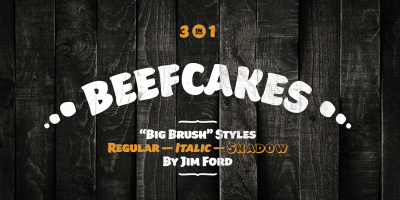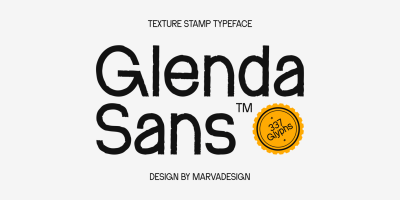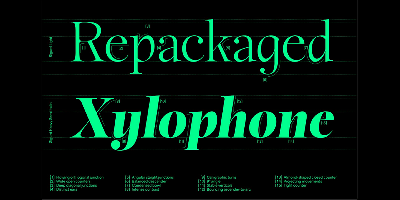Typography Psychology: How Fonts Influence American Consumer Behavior
Typography Psychology: How Fonts Influence American Consumer Behavior
Every font choice is a psychological trigger. When American consumers encounter text, their brains make instant judgments about trustworthiness, quality, personality, and value – all within milliseconds of seeing the first letter. These snap decisions, largely operating below conscious awareness, can determine whether a customer trusts your brand, purchases your product, or abandons your website before reading a single word.
Understanding typography psychology isn't just academic curiosity – it's a competitive necessity in the American marketplace where consumer attention spans shrink and competition intensifies. Brands that master the psychological impact of font choices gain measurable advantages in conversion rates, brand perception, and customer loyalty that translate directly to revenue growth.
This comprehensive analysis reveals how fonts influence American consumer psychology, examining the neurological mechanisms behind these effects and providing actionable strategies for leveraging typography psychology to improve business outcomes.
The Neuroscience of Font Perception
Millisecond Judgments and First Impressions
American consumers form initial impressions of brands within 50 milliseconds of exposure – faster than conscious thought processes can operate. During this critical window, typography serves as the primary visual cue for brand personality, quality assessment, and trustworthiness evaluation.
Neurological studies using eye-tracking and brain imaging technology reveal that different font characteristics activate distinct neural pathways associated with emotional responses, memory formation, and decision-making processes. These findings explain why font choices can dramatically impact consumer behavior even when consumers cannot articulate why they feel drawn to or repelled by particular brands.
Cognitive Processing and Reading Comprehension
Font choices directly influence cognitive load – the mental effort required to process information. Highly readable fonts reduce cognitive burden, allowing consumers to focus mental energy on content and decision-making rather than struggling to decode letterforms.
Research conducted with American consumers shows that reducing cognitive load through optimal font selection can improve comprehension by 15-25% while increasing purchase intent and brand recall. These effects compound over extended reading sessions, making typography choices particularly crucial for content-heavy marketing materials and e-commerce platforms.
Emotional Associations and Cultural Programming
Americans develop font associations through decades of cultural exposure to advertising, education, and media. These learned associations create automatic emotional responses that influence purchasing decisions before rational evaluation begins.
Serif fonts, consistently used by prestigious institutions like Harvard University and The New York Times, trigger associations with authority, tradition, and credibility. Sans-serif fonts, popularized by technology companies and modern brands, evoke innovation, efficiency, and forward-thinking. Script fonts suggest personal attention and craftsmanship, while display fonts convey creativity and uniqueness.
Font Categories and Consumer Psychology
Serif Fonts: Authority and Trustworthiness
Serif fonts consistently score highest in consumer trust studies conducted across American demographics. The small decorative strokes that define serif fonts subconsciously suggest attention to detail, traditional craftsmanship, and institutional reliability.
American financial services companies like JPMorgan Chase and Goldman Sachs leverage serif fonts to trigger these trust associations, particularly in communications about retirement planning, investment services, and wealth management. Healthcare organizations similarly use serif fonts to convey medical expertise and institutional credibility.
However, serif fonts can backfire when used inappropriately. Technology startups using serif fonts may appear outdated or overly formal, while casual dining restaurants might seem pretentious or inaccessible. The key lies in aligning font psychology with brand positioning and target audience expectations.
Sans-Serif Fonts: Innovation and Accessibility
Sans-serif fonts trigger psychological associations with modernity, efficiency, and technological competence. American consumers consistently rate sans-serif brands as more innovative and forward-thinking compared to serif alternatives, making these fonts essential for technology companies and brands seeking to project progressive values.
Apple's strategic use of san-serif typography reinforces the brand's innovative positioning while ensuring excellent readability across digital devices. Google's commitment to sans-serif fonts supports their mission of organizing information accessibly while projecting technological leadership.
The psychological impact extends beyond technology sectors. Healthcare brands use clean sans-serif fonts to suggest medical precision and modern treatment approaches. Financial technology companies leverage sans-serif typography to differentiate themselves from traditional banks while building trust through clarity and transparency.
Script Fonts: Personal Connection and Craftsmanship
Script fonts trigger psychological responses associated with human touch, personal attention, and artisanal quality. American consumers perceive script typography as more personal and caring compared to geometric alternatives, making these fonts powerful tools for service businesses and lifestyle brands.
Restaurants use script fonts to suggest home-cooked quality and personal attention from chefs and staff. Wedding vendors leverage script typography to evoke romance and special occasion importance. Craft breweries employ script fonts to communicate artisanal brewing processes and attention to traditional methods.
However, script fonts require careful application to avoid negative psychological effects. Overuse can appear unprofessional or difficult to read, while inappropriate script choices can seem fake or contrived. Successful script implementation requires matching font personality to brand authenticity and target audience preferences.
Display Fonts: Creativity and Uniqueness
Display fonts trigger psychological associations with creativity, uniqueness, and memorable experiences. These fonts help brands stand out in crowded markets while communicating innovative thinking and creative problem-solving capabilities.
Entertainment companies use bold display fonts to suggest excitement and memorable experiences. Fashion brands leverage distinctive display typography to communicate unique aesthetic vision and creative leadership. Event marketing employs display fonts to create anticipation and convey special occasion importance.
The psychological power of display fonts comes with significant risks. Poor display font choices can appear amateurish or difficult to read, while excessive use can overwhelm consumers and hurt brand perception. Successful implementation requires balancing distinctiveness with readability and professional appearance.
Demographic Variations in Font Psychology
Generational Differences in Typography Perception
American consumers from different generations exhibit distinct psychological responses to typography based on their formative cultural experiences and technological exposure.
Baby Boomers (born 1946-1964) show strong positive responses to traditional serif fonts that suggest institutional authority and time-tested reliability. This generation associates serif typography with prestigious newspapers, established corporations, and trusted institutions they've relied on throughout their lives.
Generation X (born 1965-1980) responds positively to both serif and sans-serif fonts but shows particular affinity for typography that suggests competence and straightforward communication. Having experienced both analog and digital transitions, this generation appreciates fonts that work effectively across multiple platforms.
Millennials (born 1981-1996) demonstrate strong preferences for sans-serif fonts that suggest innovation and accessibility. Having grown up during the internet revolution, this generation associates clean, modern typography with technological competence and progressive values.
Generation Z (born 1997-2012) shows the strongest preference for distinctive, personality-driven typography that enables individual expression and brand differentiation. This generation responds positively to fonts that suggest authenticity and creative uniqueness rather than corporate conformity.
Regional and Cultural Psychology Variations
Typography psychology varies significantly across American regions, reflecting local cultural values and aesthetic preferences.
Northeast consumers respond more positively to serif fonts that suggest educational achievement and institutional credibility, reflecting the region's concentration of prestigious universities and financial institutions.
West Coast consumers show stronger preferences for modern sans-serif fonts that suggest innovation and environmental consciousness, aligning with the region's technology industry influence and progressive values.
Southern consumers demonstrate positive responses to script fonts and traditional serifs that suggest hospitality, tradition, and personal attention, reflecting regional cultural values emphasizing relationships and heritage.
Midwest consumers prefer straightforward, readable fonts that suggest reliability and honest communication, reflecting regional values emphasizing practical efficiency and trustworthy business practices.
Industry-Specific Typography Psychology
Healthcare and Medical Services
American healthcare consumers exhibit distinct psychological responses to typography that influence trust, perceived competence, and treatment compliance. Clean, readable sans-serif fonts trigger associations with modern medical technology and precise treatment approaches.
However, healthcare typography must balance innovation signals with trustworthiness indicators. Many successful healthcare brands combine modern sans-serif fonts for digital communications with traditional serif fonts for patient education materials, leveraging different psychological triggers for optimal patient response.
Financial Services and Insurance
Typography psychology proves particularly crucial in financial services where consumer trust directly impacts business success. American consumers consistently associate serif fonts with financial stability and institutional credibility, explaining why traditional banks maintain serif typography despite digital transformation pressures.
Conversely, financial technology companies leverage sans-serif typography to suggest innovation and user-friendly approaches to traditionally complex financial services. These companies must balance innovation signals with trust indicators to build credibility while differentiating from traditional competitors.
Food and Beverage Industry
Typography psychology significantly influences American food purchasing decisions through associations with quality, taste, and dining experience expectations. Script fonts trigger psychological responses associated with home cooking and artisanal preparation, while clean sans-serif fonts suggest health consciousness and transparent ingredients.
Fast-casual restaurants often employ font combinations that balance efficiency signals (sans-serif) with quality indicators (subtle script elements), creating psychological frameworks that justify premium pricing compared to traditional fast food while maintaining accessibility compared to fine dining.
Technology and Software
American technology consumers exhibit strong psychological preferences for fonts that suggest innovation, user-friendliness, and technical competence. Sans-serif fonts consistently outperform alternatives in technology contexts, but subtle variations in font characteristics can significantly impact consumer perception.
Geometric sans-serif fonts suggest precision and technical excellence, while humanist sans-serif fonts indicate user-centered design and accessibility. Technology companies must choose fonts that align with their specific positioning while meeting technical performance requirements across diverse digital platforms.
Practical Applications for Business Success
E-commerce Conversion Optimization
Typography psychology directly impacts e-commerce conversion rates through multiple mechanisms that influence consumer purchasing decisions.
Product Description Typography: Readable fonts that reduce cognitive load enable consumers to process product information efficiently, leading to more informed purchasing decisions and reduced return rates.
Pricing Psychology: Font choices for price display significantly influence perceived value. Bold, clear fonts suggest transparency and confidence, while elaborate fonts can make prices appear higher than they actually are.
Call-to-Action Buttons: Button typography triggers psychological responses that influence click-through rates. Sans-serif fonts suggesting efficiency typically outperform script fonts that may appear less actionable.
Brand Storytelling and Content Marketing
Typography psychology enhances content marketing effectiveness by aligning visual presentation with psychological impact goals.
Authority Building: Serif fonts in thought leadership content trigger associations with expertise and institutional credibility, improving content sharing and influence metrics.
Accessibility and Inclusion: Readable font choices demonstrate commitment to inclusive communication while ensuring content reaches diverse audiences effectively.
Emotional Connection: Strategic font choices can enhance emotional storytelling by reinforcing narrative themes through typographic personality.
Measuring Typography Psychology Impact
A/B Testing Font Psychology
Businesses can measure typography psychology impact through systematic A/B testing that isolates font variables while controlling for other design factors.
Conversion Rate Testing: Test different font choices for key conversion elements like headlines, product descriptions, and call-to-action buttons to identify optimal psychological triggers for specific audiences.
Brand Perception Studies: Survey consumers about brand personality perceptions when exposed to different typography choices, revealing how font decisions influence brand positioning effectiveness.
Engagement Metrics: Monitor time-on-page, scroll depth, and content completion rates across different font implementations to understand how typography affects content consumption behavior.
Advanced Analytics and Heat Mapping
Modern analytics tools enable sophisticated measurement of typography psychology impact through user behavior analysis.
Eye-Tracking Studies: Professional eye-tracking analysis reveals how font choices influence visual attention patterns and reading behavior across different consumer segments.
Heat Map Analysis: Website heat mapping shows how typography choices affect user interaction patterns and conversion funnel performance.
Neurological Testing: Advanced research techniques using EEG and fMRI technology can measure unconscious responses to typography choices, providing insights beyond consumer self-reporting limitations.
Future Trends in Typography Psychology
Artificial Intelligence and Personalization
Emerging AI technologies enable dynamic font selection based on individual consumer psychology profiles, optimizing typography choices for maximum persuasive impact with specific users.
Cross-Cultural Psychology Research
As American markets become increasingly diverse, typography psychology research increasingly focuses on cultural variations in font perception and optimal strategies for reaching multicultural audiences.
Accessibility Integration
Growing emphasis on inclusive design requires balancing typography psychology goals with accessibility requirements, driving innovation in fonts that achieve both psychological impact and universal usability.
Typography psychology represents one of the most powerful yet underutilized tools in American marketing and brand building. The fonts you choose don't just convey information – they shape consumer emotions, influence purchasing decisions, and build or undermine brand trust in ways that directly impact business success.
Understanding and applying typography psychology principles can provide sustainable competitive advantages that compound over time as consistent font choices build stronger brand associations and more effective consumer communications. In an increasingly crowded marketplace where consumer attention becomes ever more precious, mastering the psychological impact of typography isn't just smart strategy – it's essential for business survival and growth.




